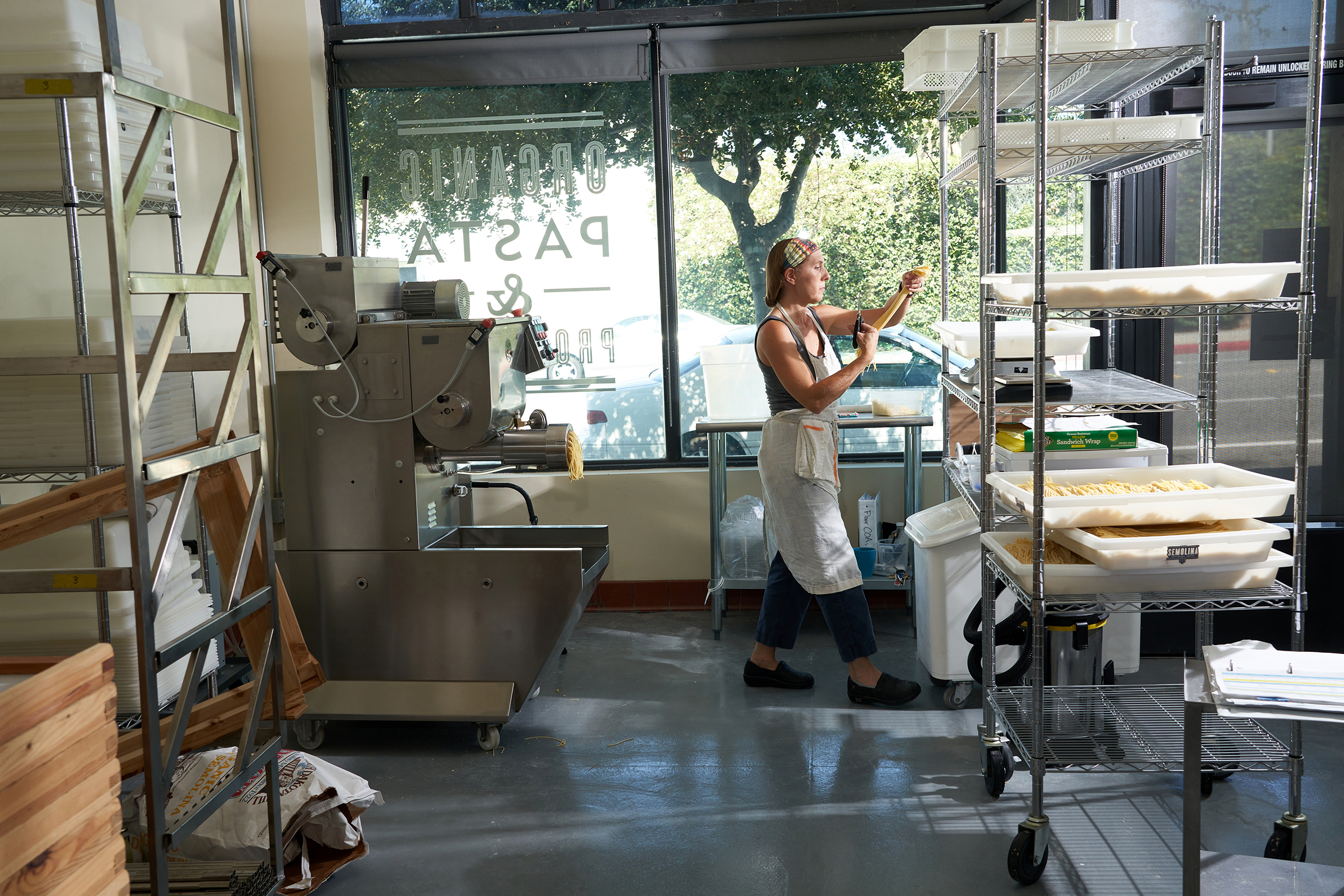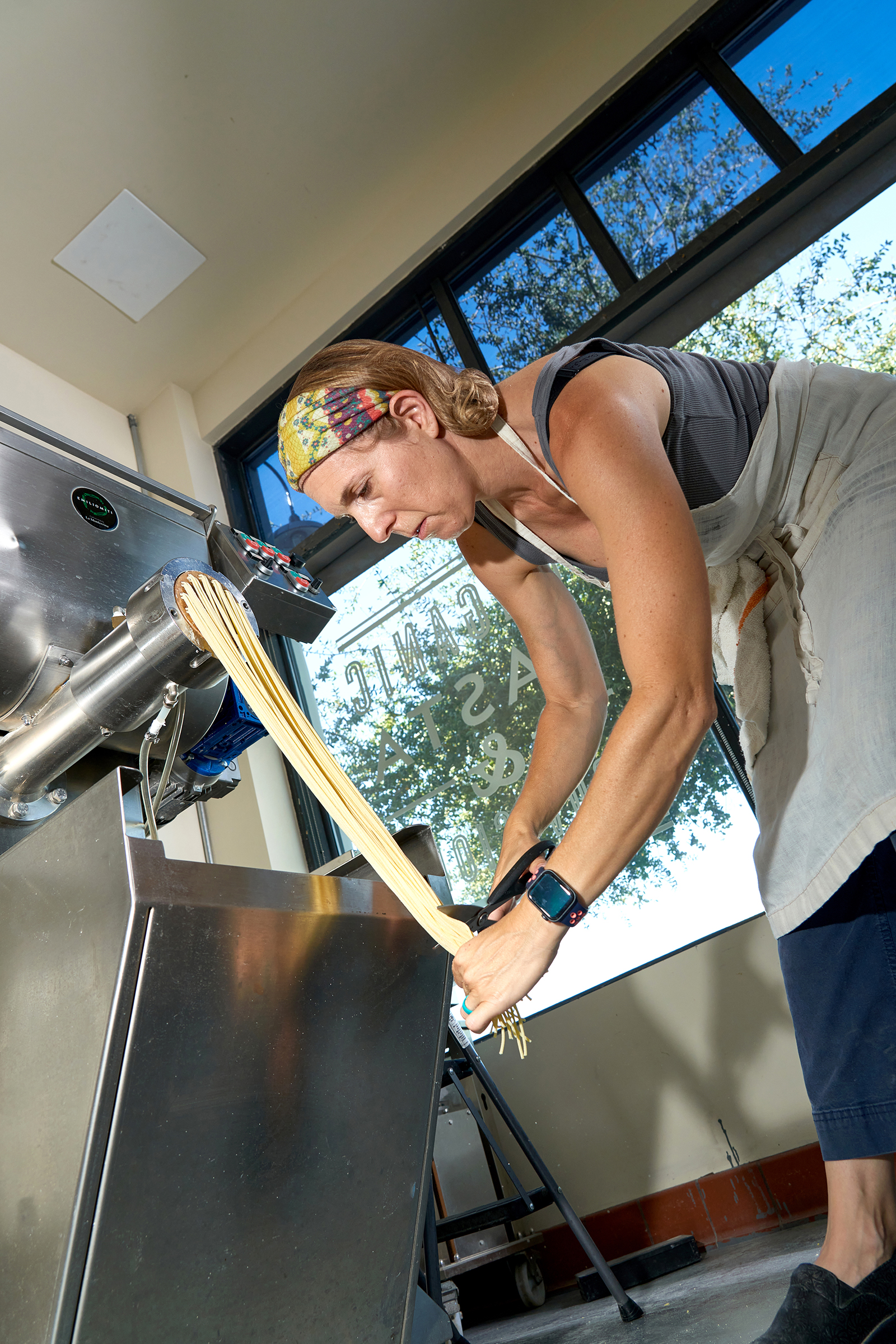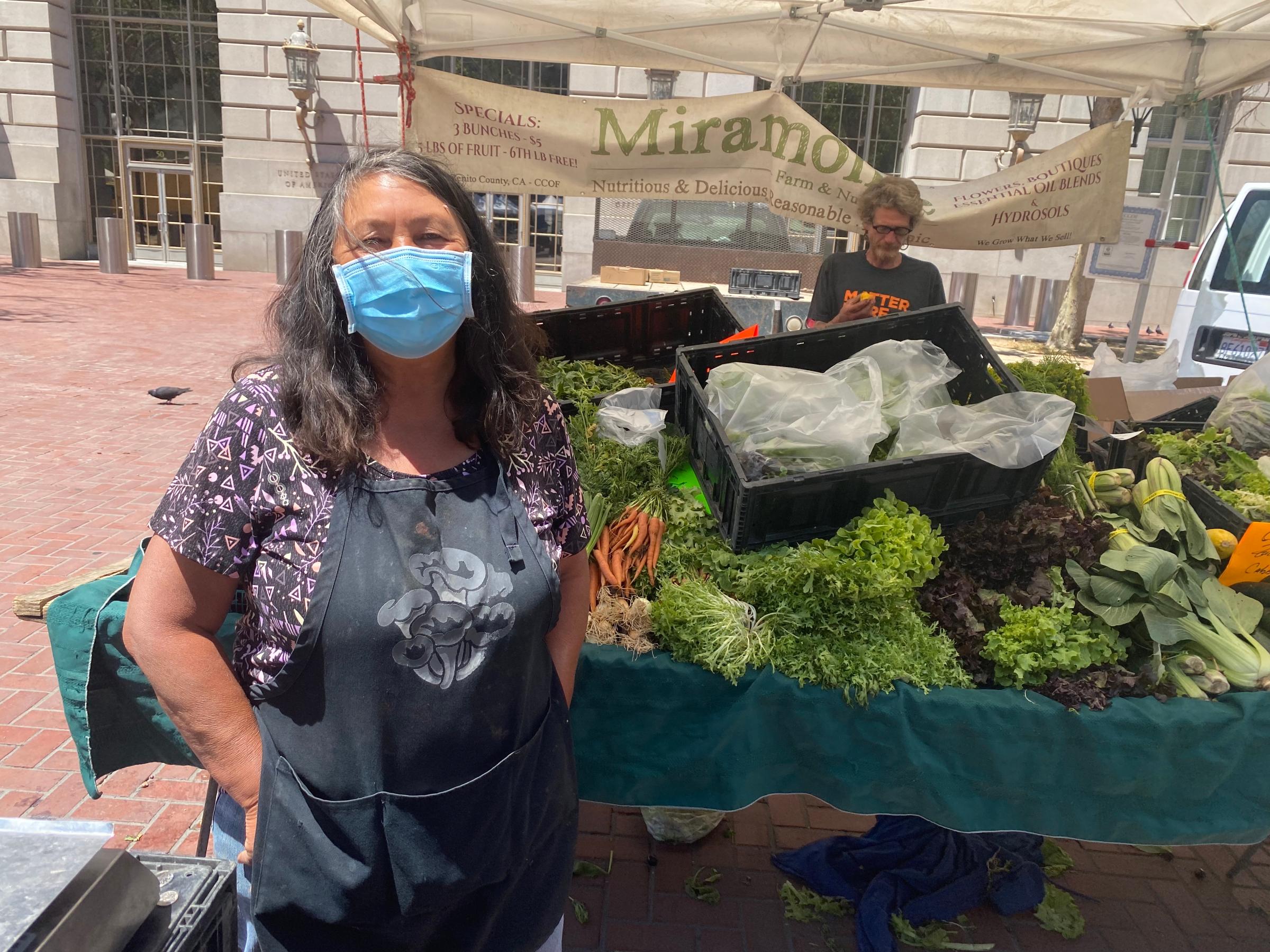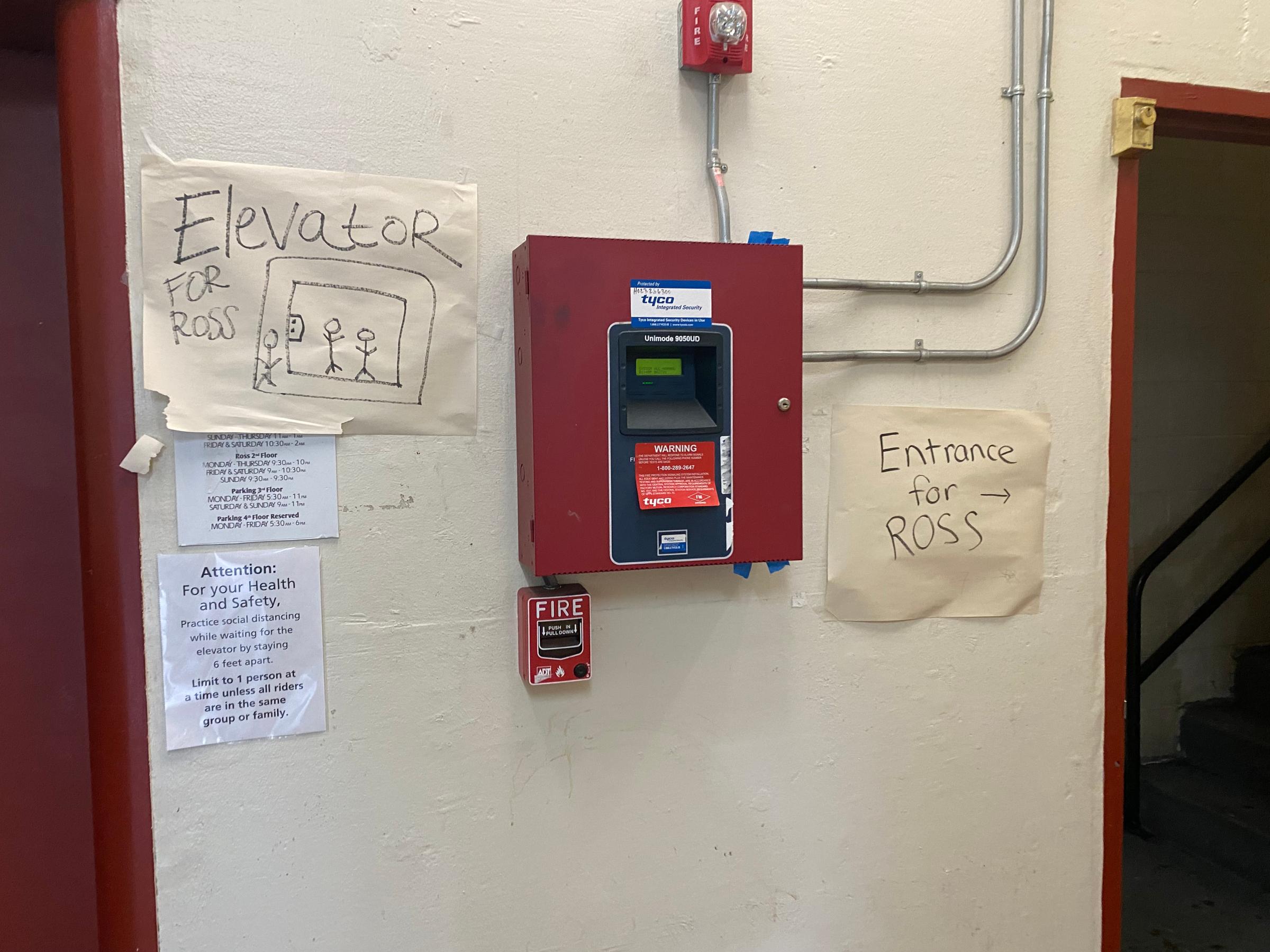
There are not many pasta companies run by women. I discovered this while standing in the aisle of my grocery store on the third day of a weeklong effort to buy things only from companies owned by or run by women, as I frantically Googled “CEO” alongside “Barilla,” “De Cecco” and then, desperately, “Banza.”
Nor are there many women-run companies that make canned beans, tomato sauce, milk (oh, the irony), beef—or a laundry list of other grocery products. Nor laundry detergent, for that matter. This was something I knew, in principle, but that became very clear the week I vowed to only spend my money at companies run by women. I kept thinking I’d found something I could buy, like Organic Girl lettuce, which screams “female” from its purple label and curly font, only to find the face of a male CEO or owner smiling up at me from the company’s website. (In Organic Girl’s case, one of the company’s most prominent investors, Steve Taylor, is also on the board of Capitol Ministries, which led a White House Bible study in the Trump Administration that prohibited women from teaching the Bible to grown men.)
There are a record number of female Fortune 500 CEOs this year, and still women only make up 8.2% of the list. Women run marketing departments and HR, and yes, rarely they are CEOs, but women don’t helm the multinational corporations that make the things I buy on a daily basis. (Sorry, Northrop Grumman, I will not be purchasing a stealth bomber this week.)
The rules of my experiment were simple. I could only spend money on businesses run by women. If a company was public, it had to have a female CEO. If it was private, it needed to be at least 51% owned, operated, controlled, and managed by a woman or women, a distinction made not by me but by the Women’s Business Enterprise National Council (WBENC), which certifies such things.
The first few days of my experiment had been easy. I got a tuna melt and fries at a woman-owned restaurant near my San Francisco apartment, bought a natural-wood rhino on wheels from a woman-owned toy store, and took home some cookies from a very popular woman-owned bakery.
But then I started needing stuff. We were out of groceries. My exercise pants suddenly had a giant hole in the crotch. My paper daily planner ended in June with no warning. Resorting to my usual shopping habits—running up the street to Safeway (owned by Albertsons CEO Vivek Sankaran), ordering new leggings from Amazon (Jeff Bezos is out as CEO but has been replaced by Andy Jassy), buying really any alcohol really—was out.
Even stores I was reasonably sure were women-owned were actually not. The San Francisco grocery store Mollie Stone’s Markets has a CEO named Mike. The nail salon around the corner, which has all female staff, is owned by a man. I started calling the small produce stores in my neighborhood, sure that the Russian market where the same older woman is always at the register, telling workers where to unload the pears and the potatoes, was woman-owned. But I was wrong.
The owner was a man, and he had left early, the woman answering the phone told me, when I asked. Then she hung up.
A Woman-Owned Business Is Hard to Find
I’d gotten the idea to only patronize women-owned businesses in March of 2020, around the time Elizabeth Warren dropped out of the presidential race and it became clear that a man was once again going to be the U.S. President. Like many other women, I felt defeated. It was 2020! In the U.S., women graduate from college at a higher rate than men! They drive 70% to 80% of consumer purchases! And still, men run the government and America’s biggest retailers and the tech companies that power our lives.
One Friday night, sitting in a restaurant owned by a man—I knew this because he puts his name on all his restaurants—I started to wonder why I was giving my money to so many male-owned businesses. If I really wanted to see more women in charge, didn’t I have a role to play in making this happen? I would embark on an experiment, I decided, and only buy things from businesses owned or run by women.
Then the pandemic happened, and it seemed impossible to try and buy women-owned toilet paper when it was hard enough to get any toilet paper. When I picked up the experiment again this June, the world was different—but it was also the same. The President was still a man. Men were still running America’s biggest companies. I’d even added another male to the world, having given birth to a baby boy during the pandemic. (He, too, runs everything.)
Even if you are determined to only buy women-owned, it’s not easy to find out which companies qualify. The racial-justice movement has helped foster a public desire to shop at more Black-owned businesses, and motivated Black-owned businesses to identify as such. But many of the companies that have been certified by the WBENC as women-owned have chosen not to be listed in the organization’s rather sparse directory.
Yelp said in 2019 it was adding a “women-owned business” attribute to its site, but you have to know the exact right words to type in the search box to access it. Walmart launched a new page at walmart.com/womenowned in Women’s History Month in 2015, but the URL no longer works. Between 2012 and 2019, the company spent $30 billion with companies run by women as part of an effort to diversify its suppliers, about 2% of what it spent overall during that time period.
I began to wonder if gender equality in the business world will only come when we can grow human babies in bags.
As I looked for lists of brands I could patronize, I kept ending up on the websites of women’s magazines like Self and Shape, reading about women-owned businesses selling $125 pillows or $95 necklaces, while being served ads about cassoulets I could make while running errands. In 2021, “women-owned business” means, by and large, wellness and fashion companies selling products to women that they don’t really need. (Hello, $66 Goop nonreturnable jade egg.)
I tried to browse the aisles of stores and look for products with women’s names, but that turned out to be a red herring, since most of them are run by men. That includes Annie’s Homegrown, Briannas Salad Dressing, Mary’s Gone Crackers, Libby’s Pumpkin, Mom’s Spaghetti Sauce, and brands like Sara Lee, Betty Crocker, Jennie-O and Marie Callender’s. I kept adding to the list in disbelief as I roamed the aisles of Safeway, looking for something I could buy, or the minuscule logo that shows a product has been WBENC-certified. After an hour, I left with one product: Noosa yogurt. It has a woman co-founder, but I later found out that the company was acquired by a male-run company backed by a private-equity firm.
I rushed home to pump breast milk for my son and marveled at how few dairy companies were run by women, although we are the ones who know what it is like to actually make milk. I thought I had found a women-owned multinational dairy company in Danone, which owns Oikos, Activia, Dannon and Silk, since shareholders pushed out its male CEO in March for caring too much about sustainability. He was replaced with an interim CEO who is a woman, Véronique Penchienati-Bosetta, but it turns out she’s a co-interim CEO who shares that title with a man. Besides, Danone announced recently that a different man was going to become the permanent CEO.
I had a hazy idea that Jessica Alba ran a company that made organic baby and beauty products, but it turns out that it’s now a public company and the CEO is a man. Men run the companies that make the most popular baby formulas and baby bottles and baby clothes. Even Lansinoh, which dominates the market in nipple creams and breast-soothing packs and breast-milk storage bags, and makes the extremely itchy hands-free pumping bra I use every day, is run by a man, Kevin Vyse Peacock.
What Happened to the End of Men?
Men are allegedly in decline. Boys are graduating high school at a lower rate than girls are. The jobs that men once dominated, like manufacturing and mining, are disappearing. Their life expectancy is falling, and they’re dying from suicides and drug overdoses at a higher rate than women. I thought about this as I passed a homeless encampment on San Francisco’s Haight Street that consisted entirely of men, where a man was brushing his teeth under a tree, on my way to visit Gus’s Community Market, a grocery store that stocks lots of women-run brands and is owned by a mother and her two sons. How was it possible that the end of men is approaching, but that men are running everything at the same time?
Well, not everything. I did find women-owned brands when I shopped at stores like Gus’s that stocked locally made, organic items. I bought Nature’s Path organic cereal, Purely Elizabeth organic granola and Maya Kaimal tikka masala simmer sauce. I grabbed marinara that featured the face of the celebrity chef Lidia Matticchio Bastianich, and pumped my fist in victory when I spotted a box of Semolina Artisanal Pasta on an endcap, which features an image of its founder and CEO, Leah Ferrazzani, on the box. But these are not products that you’ll find in most grocery stores.

It’s no accident that most of the women-led food companies are local instead of national, Ferrazzani told me, when I talked to her a few days later. When she started her business in 2014—with two children under the age of 2—the first stores to carry her product were women-owned. Soon she was in 300 stores.
But as her business grew, Ferrazzani found that the project of taking a small business national conflicted with being a parent. She was paying for storage and a kitchen and a broker to get her into supermarkets, and still couldn’t make pasta fast enough. To grow bigger and go national, she was going to need hundreds of thousands of dollars of funding. She’d also need to travel the country pitching investors and buyers.
“I couldn’t reconcile it with having two little kids,” she told me. She was about to give up and close her business when a female friend who owned a restaurant gave her some advice: stay small. “She was like, ‘Is that the only way—do you really have to be that big?’” Ferrazzani said. “’You don’t have to give up your relationship with your family and the goals that you have. That is such a male-driven business sensibility.’”
So Ferrazzani decided she’d downsize. She pulled out of her big distributor and Gelson’s and Whole Foods, and cut the number of stores she was in by two-thirds. She focused on Los Angeles, where she lived, and California. When Whole Foods approached her in 2019 and asked her to pitch them on putting her pasta in stores nationwide, she declined. She didn’t want to have to turn over her business to the investors whom she’d need to grow. “My philosophy became that I was trying to build a business that was big enough,” she told me. “Big enough for balance, to sustain itself, for me to have the control to make those decisions.”
Ferrazzani’s decision to limit her ambitions resonated with me as I tried to shop at women-owned stores and do my job and make milk for my 8-month old. Pregnancy exhausted me, and I barely made it through the initial sleepless months of having a newborn. I couldn’t imagine adding on being a CEO, or even running a small business. Every time I needed to plan a trip for work after my son was born, my brain melted at the logistics of traveling with breast milk, and I felt a blossoming guilt about leaving my husband alone to do bedtime and bath time and mornings and his job at the same time.

“I was a farmer on my own, but then my husband got involved, because babies,” says Grace Teresi, whom I met at a farmers’ market in downtown San Francisco, where I gratefully bought onions and spinach and zucchini and peaches. Teresi had her own produce farm from 1982 to 1992, but when she started having kids, in 1993, she says, she couldn’t do it all on her own. Her husband started running the business alongside her while she took care of the kids. Now, “he gets his way most of the time,” she jokes.
There is a world where that guilt and responsibility for the baby falls equally on men and women, but it’s a world where neither person has to go through the trials of pregnancy or childbirth. While reporting this story, I kept thinking of a report I’d seen about scientists who grew lambs in an artificial womb that they called a biobag. If human reproduction worked that way, responsibility for bearing and caring for children might fall more equally on both sexes. I began to wonder if gender equality in the business world will only come when we can grow human babies in bags.
Men Dominate Finance and Tech
Of course, there is an element of choice in all of this. Some men are choosing to spend more time at work and less time at home, choosing to go to business school, choosing not to have families at all. In every OECD country, a greater share of men than women report working more than 40 hours a week.
“My interests don’t lie in finance, and I don’t want to spend my career in that,” Heidi Orrock (Diestel) told me, when I called her up to talk about the family-run turkey company that the Diestel website says she “helms.” It turns out that Orrock, who was born into this fourth-generation family company, is not technically the head of Diestel Ranch. Instead, her husband, Jared, who has an MBA, is president. She handles marketing, sales and customer service.
Men also dominate the tech industry, which has created a disturbing dynamic in which male-run tech companies like Amazon take a cut from the women-owned small businesses that need them to survive. I usually order dinner from Uber Eats or DoorDash on the weekends to take a break from cooking, but couldn’t reconcile doing that on my self-imposed Boycott Men Week, since a delivery app would be taking a fee from the women-owned restaurant I chose to support. When I needed a new part for my breast pump, I ordered it directly from the company, which is run by a woman, although that cost twice as much as ordering from Amazon, and I had to pay for shipping.
I shopped at a local woman-owned thrift store to buy a bathing suit for my son, rather than thredUP, the male-run online used clothing company/tech platform that had an IPO in March. Instead of just using Amazon to buy another pastel daily planner dotted with flowers from Blue Sky, a company run by two men, I spent twice as much to buy one directly from Bloom Daily Planners, a company founded and run by women. It came with a free sheet of stickers with slogans like “You Glow Girl” and “Girlboss” and an insert reading “Yay! You Invested in You!” above a picture of two girls giggling under a shower of confetti. I was skeptical, but it was higher-quality than the brand I’d bought for years.
Some of the national women-run companies I visited had a run-down feeling, as if they would not be around in a few months. When I went to buy exercise pants at a Ross’s Dress for Less, whose parent company, Ross Stores, is run by a woman, a sign on a brown paper bag informed me that the escalator was broken. I walked past an elevator with a hand-drawn picture of three stick figures to show people it led to Ross, and a sign written in marker directing me to the dingy stairs.
Ross’s, like many other retail companies with female CEOs, like JCPenney, Kohl’s and Chico’s, faces strong headwinds at a time when people are shopping less at stores and more on the websites of male-run tech companies. That’s no surprise: women and people of color are more likely to be promoted to CEO of weakly performing firms, studies show, a phenomenon called the glass cliff. (To wit: the CEO of JCPenney, Jill Soltau, was replaced by a man in December after what CNN Business deemed ‘two years of failure.’)
There are hurdles for women who want to start their own companies, too. Last year, just 2.3% of venture capital funding went to women-led startups, even as stories proliferated of overconfident men like Adam Neumann, the ex-CEO of WeWork, who convinced investors his company was worth nearly $50 billion. (It was not.) Not surprisingly, Pact, an Internet clothing company that says it will ‘disrupt the apparel industry’ and is trying, on Instagram, to sell me a dress that it says is more comfortable than sweatpants, is run by a man.

There are exceptions to the glass cliff. Anne M. Mulcahy was the CEO of Xerox from 2001 to 2009, and saved it from bankruptcy. And there are efforts under way to require companies to put more women in charge. The European Union is discussing fining European-listed companies if less than 40% of their non-executive board seats were occupied by women. In 2018, California required that public companies listed in the state have at least one woman on their board by 2019 and at least two by the end of 2021. Before the law, more than one-quarter of California companies had no women on their boards; now 97% do.
Still, reporting this story did not make me feel very optimistic about the state of gender equality in the business world. Even though studies show that the share price of companies with women CEOs outperform those with men CEOs by 20%, and that women on boards are more likely to create a sustainable future than those without, it seemed like women still could only get so far. It’s been decades since women have been allowed to get a credit card or loan without a husband’s signature, yet I kept encountering women-run businesses that were acquired by a bigger company owned by a man, or run out of business by a well-capitalized male-run competitor, or undercut on prices. Or all three.
I drove to Avedano’s, a San Francisco butcher shop that sells locally grown meat and was founded by three women in 2007. I talked to Angela Wilson, who owns the shop now and who was butchering chicken thighs in denim overalls, a black T-shirt, and a backward baseball cap. She tries to run a fair business, she says, paying employees $25 an hour so they can afford to live in San Francisco, buying from small farmers whom she knows personally.
But she almost went out of business in 2019 because of competition from (male-run) sites like Good Eggs and Instacart that run off the backs of gig workers who aren’t guaranteed the minimum wage. She posted a letter on a local food blog bemoaning the decline of her butcher shop, worrying that Americans don’t care about hard work anymore, and out of nowhere, an investor stepped in and bought 20% of her company. He was, of course, a man. She doesn’t think that’s a coincidence.
“I enjoy what I do. And I feel like I’m making a difference, and that makes me feel good,” she said. “A lot of men don’t care about that. They want money or power.” I left Avedano’s with meat for the week: a flank steak, some chicken breasts and some chicken thighs, which Wilson deboned for me. The quality was amazing. It also cost me $103.
As I rushed back home to pump, I was beginning to get an idea of what a world would look like if I continued to boycott companies run by men. I could buy things that were organic, locally made and extremely high-quality, from companies that cared about sustainability and that treated their workers well. But realistically, I could not afford to do it every week. Nor could I be a good mother and a good employee if I was spending all of my time trying to figure out which brands were women-owned.
It’s a relief to once again have the convenience of running to the male-owned store down the block and buying cheap cheese from a faceless company that’s probably owned by a male-owned hedge fund. You know what they say. Women can’t have it all.
Correction July 22
The original version of this story misstated the gender of JCPenney’s CEO. The current CEO is a man who in January replaced former CEO Jill Soltau, a woman.
More Must-Reads from TIME
- How Donald Trump Won
- The Best Inventions of 2024
- Why Sleep Is the Key to Living Longer
- Robert Zemeckis Just Wants to Move You
- How to Break 8 Toxic Communication Habits
- Nicola Coughlan Bet on Herself—And Won
- Why Vinegar Is So Good for You
- Meet TIME's Newest Class of Next Generation Leaders
Contact us at letters@time.com